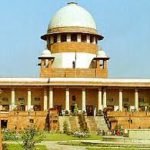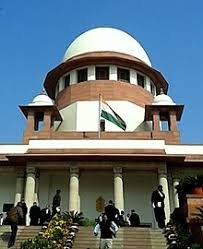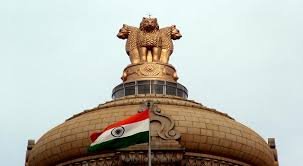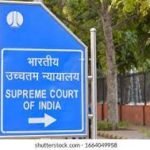Dispute originated from the “400 KV Jhajjar Power Transmission System-PPP-1” project, initiated by Haryana Vidyut Prasaran Nigam Limited (HVPNL). Jhajjar KT Transco Private Limited (JKTPL) was the selected bidder, and Kalpataru Power Transmission Ltd. was a sub-contractor for erection, commissioning, and other services.
The project involved a 100 km transmission line passing through four districts: Bhiwani, Jhajjar, Rohtak, and Sonepat.
Core Dispute: Landowners sought enhanced compensation for damages suffered due to the erection of transmission lines and towers on their properties, while the contractors challenged the compensation awarded. Crucially, ownership of the land is not transferred; only the right of user is acquired.
Lower Court Decisions:
In Sonepat, the Additional District Judge awarded compensation at 85% of the collector rate (₹85,00,000/- per acre) for the tower base area, along with 8% interest.
In Jhajjar, the Trial Court initially awarded ₹30,00,000/- and, after a remand, assessed it at ₹26,12,000/- with 18% interest.
High Court Judgment: The High Court passed a common judgment for cases from different districts but focused only on material related to District Sonepat. It awarded a uniform compensation of 85% of the collector rate (fixed at ₹1.50 crores per acre) for the tower base area and 15% of the land value for the diminishing value of land across the Right of Way (ROW) corridor, plus 8% interest.
Legal Labyrinth: The Telegraph Act & Compensation Framework
Law Involved
The Indian Telegraph Act, 1885 (the 1885 Act): This is the primary legislation. Section 164 of the Electricity Act, 2003, adopts the provisions of the 1885 Act for such projects.
Section 10: Confers power on the telegraph authority (or those adopting its provisions) to place and maintain telegraph lines and posts. It specifies that only a right of user is acquired, not ownership, and mandates full compensation for any damage sustained.
Section 16: Deals with assessment and payment of compensation.
Section 16(3): Stipulates that disputes concerning the sufficiency of compensation are determined by the District Judge on application by either party.
Section 16(4): Addresses disputes regarding entitlement to receive compensation or the proportions, to be determined by the District Judge after the authority deposits the amount.
Section 16(5): States that every determination by a District Judge under sub-section (3) or (4) shall be final, thereby precluding any statutory appeal.
Ministry of Power (MOP) Guidelines dated 15.10.2015: The High Court relied on these guidelines for assessing compensation. These guidelines suggest 85% of the circle rate for the tower base area and a maximum of 15% of the land value for the ROW corridor.
Absence of Appellate Remedy: Due to Section 16(5)’s finality clause, parties are often forced to invoke the extraordinary jurisdiction of the High Court under Article 226 or 227 of the Constitution of India.
Supreme Court’s Scathing Review: Errors and Omissions
Reasoning The Supreme Court identified several fundamental errors in the High Court’s approach:
District Discrepancy: The High Court erroneously decided cases pertaining to different districts (Sonepat and Jhajjar) with a common judgment, relying solely on material relevant to Sonepat, neglecting facts unique to Jhajjar.
Procedural Flaw: The High Court treated the matters as if they were original writ petitions (filed for the first time), making findings merely based on pleadings that were not denied, rather than reviewing the Trial Court judgments which were based on evidence.
Uniform Compensation for Diverse Land: The High Court applied a uniform compensation rate across the entire 100 km transmission corridor, disregarding the diverse characteristics of the land (e.g., proximity to highways, agricultural use, road connectivity) across different villages and districts. This was deemed an improper methodology for assessing fair compensation.
Misapplication of MOP Guidelines:
The guidelines were issued on 15.10.2015, much after the transmission line was drawn (2010-2012) and compensation applications were filed.
These guidelines required adoption by concerned States/UTs, and the State of Haryana had not adopted them.
The term “maximum compensation provided is 15% of the land value” for ROW implies it’s not a fixed rate, a point the High Court overlooked. The Court also questioned if administrative instructions could control judicial power.
Evidentiary Issues: The High Court relied on collector’s rates (₹1.50 crores per acre for Rai village in Sonepat) without it being formal evidence, based solely on a non-denial in pleadings. Sale deeds produced by landowners pertained to different villages. The Trial Court’s order in Jhajjar also contained glaring errors in assessing compensation and referencing exhibits.
Lack of Appellate Remedy in 1885 Act: The Court highlighted that Section 16(5) makes the District Judge’s determination “final,” precluding a statutory right of appeal.
This forces parties to invoke extraordinary High Court jurisdiction (Articles 226/227), where reappreciation of evidence is normally not undertaken, making the remedy “illusionary”.
In contrast, a first appeal allows for a full re-hearing of both facts and law.
Outdated Statutory Scheme: The 1885 Act, unamended since its enactment, is ill-equipped for the significant increase in modern power sector litigation. It lacks crucial provisions such as:
Timelines for compensation payment or for raising grievances/filing applications.
A defined rate of interest for delayed compensation.
This lack of defined parameters leads to inconsistent interpretations across the country.
Comparison with Other Acts: Other land acquisition statutes (e.g., Land Acquisition Act, 1894; RFCTLARR Act, 2013; National Highways Act, 1956) provide detailed procedures, timelines, and statutory appeal mechanisms, unlike the 1885 Act and the pari-materia Petroleum Act, 1962.
The Verdict: Remand, Reforms, and Uniformity
Holding
High Court Order Set Aside: The Supreme Court found the High Court’s order legally unsustainable and set it aside. The matters are remitted back to the High Court for fresh consideration in accordance with law, with a request for expeditious hearing.
Directions for Legislative Reform: The Court issued significant directions for systemic improvements:
A copy of the order is to be sent to the Law Commission of India and the Ministry of Law and Justice, Government of India, to examine the issue and take appropriate steps regarding the provision of a statutory remedy of appeal against judgments/orders passed under Sections 16(3) and 16(4) of the 1885 Act, the Petroleum Act, or any other similar statute.
A copy of the order is also to be sent to the Registrar General of the High Court of Punjab and Haryana for placing before the Chief Justice to address the need for uniformity in the nomenclature of cases (Civil Suit vs. Civil Miscellaneous Application) under the 1885 Act and the Petroleum Act, 1962.
KALPATARU POWER TRANSMISSION LTD. (NOW KNOWN AS KALPATARU PROJECTS INTERNATIONAL LTD.)
V.
VINOD AND ORS. ETC.
Supreme Court: 2025 INSC 1004 (DoJ )19-08-25








